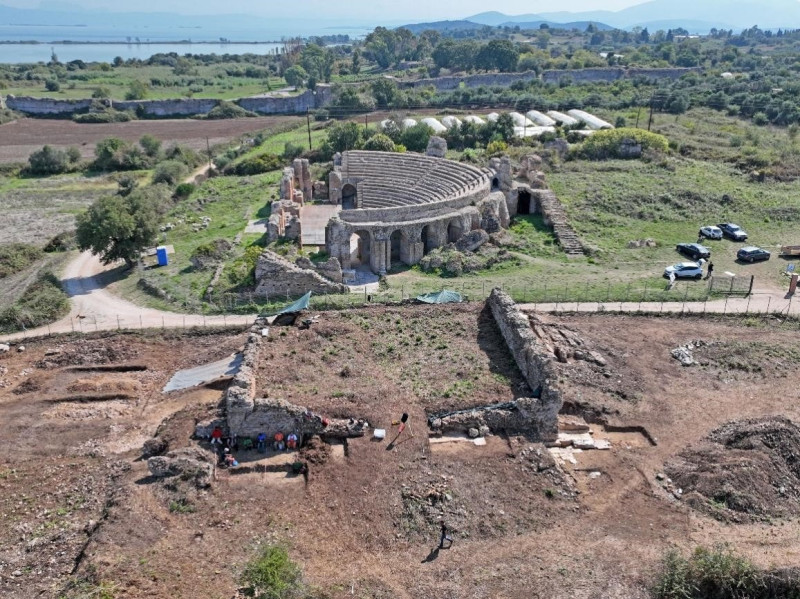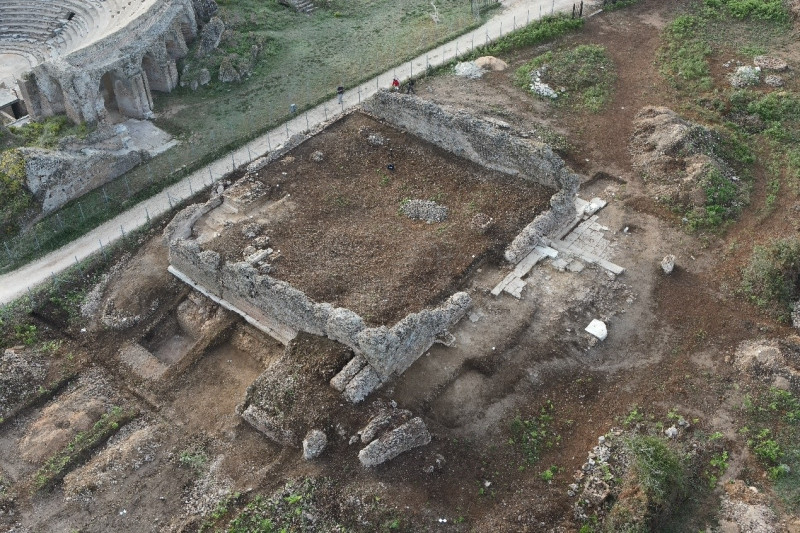In the footsteps of the political, economic and religious center of Nikopolis during imperial times, from the Systematic Excavation of the Agora
The five-year plan “Systematic excavation of the Agora (Forum) of Nicopolis” which was inaugurated with the excavation period of September-October 2023, under the direction of the honorary antiquities inspector Konstantinou
L. Zachou, proposes as a goal the detailed study of the formation, character and historical development of the Agora of Nikopolis and its individual monuments.
The program is implemented with the kind sponsorship of the Hellenic Parliament and thanks to the personal care of the President of the Parliament, Mr. Konstantinos Tassoulas.
The technical support and management of the project has been undertaken by the Civic Non-Profit Company under the name “Citizens’ Initiative “Happiness””.
As already proved during the first excavation period, research at the center of the economic, social and political life of the city can significantly enrich our knowledge about the architecture and urban planning of the urban public space of the Roman period, while it will allow the reconstruction of the monumental center of Nicopolis and its inclusion in the general master plan of the consolidation of the Archaeological Park of Nicopolis.
In the framework of the five-year program it is provided the study of the market space, which opens to the west of the Roman Conservatory as well as the excavation of various buildings whose ruins are directly related to the Agora, which they border.
The 2023 excavations focused on a square building to the west of the conservatory.
The excavation both in the periphery of the building and in part of its interior yielded a number of findings and led to important conclusions regarding the configuration of the Agora and the character of the building.
More specifically, the investigation of the outer space first brought to light a section of paved floor which, in connection with the ruins of buildings to the west, the investigation of which is planned for the current year, should be attributed to the outdoor square of the Agora.
In addition, at least two hitherto unknown additions were identified to the west and east of the main building. Finally, it was observed that the building in question is located along the edge of a natural
The exploration of the building itself proved equally rich in findings. First, the monumental five-tiered propylon to the west, which is also the only access to the building, was revealed. Despite its fragmentary state, both its monumental character and its quality of construction are fully understood.
The decoration of the exteriors
The architectural decoration of the exteriors of the building must also have been particularly imposing, as can be seen from the number and variety of architectural members and sculptures found during the work. The exteriors had rich orthomarbling, with zones covered with multi-colored marble slabs.
Equally impressive but also essential for the restoration of the historical development of the monument were the results of the excavation inside it.
The sections carried out in the NE inner corner of the building, first brought to light a part of the mosaic floor, the total area of which should be approximately 350 square meters. The excavated section bears geometrical
decorative motifs with black and white mosaics and is kept in excellent condition.
Unexpected was the discovery, on the mosaic floor, of an artificial and sufficiently high embankment, which is sealed by a second floor, this time made of second-use architectural members and fragments of marble slabs.
The superimposed floors confirm the existence of two main construction phases, a first, which is connected to the mosaic, and a second, during which the second, raised floor is constructed.
The individual findings as well as the numismatic data show that the two phases belong to the imperial period, between the 2nd and 4th centuries AD.
Finally, among the various movable findings of this first excavation period, nine sections of inscriptions are included, two of which provide information related to the function and character of the building.
Inscriptions
The first part comes from a marble wall inscription probably of the 2nd century, the surviving text of which refers to an unidentified emperor. The second inscribed marble slab found embedded in the floor
inside the building it preserves its entire text.
This is a votive inscription in honor of the emperors (θεοῖς σεβαστοῖς), which was dedicated on the initiative of a local official (horarchis), after the personal financing (from himself) of some beneficence, which did not
specified in the text.
In conclusion, the totality of the information obtained from the observations on the architecture of the building, the individual movable finds as well as the epigraphical and monetary testimonies, allow us to restore the
edifice as one of the central public buildings of the Agora, which enjoyed a long life and operation during the imperial period. Its exact function cannot yet be precisely determined, it is, however, possible that we are in a space dedicated to the imperial cult, in
Respect of the city.
The excavation work of 2023 clearly demonstrated the prospects of the research program and its potential contribution to the study of the formation and development of the urban area of Nikopolis.
The continuation of the program and the systematic investigation of the wider area of the Agora and its monuments will, on the one hand, complete our image of the center of the social life of Nikopolis during the imperial times, while, on the other hand, it will generally enrich our knowledge about the role and the evolution of the markets of Greek cities during the same historical period.
Source :Skai
I am Frederick Tuttle, who works in 247 News Agency as an author and mostly cover entertainment news. I have worked in this industry for 10 years and have gained a lot of experience. I am a very hard worker and always strive to get the best out of my work. I am also very passionate about my work and always try to keep up with the latest news and trends.












